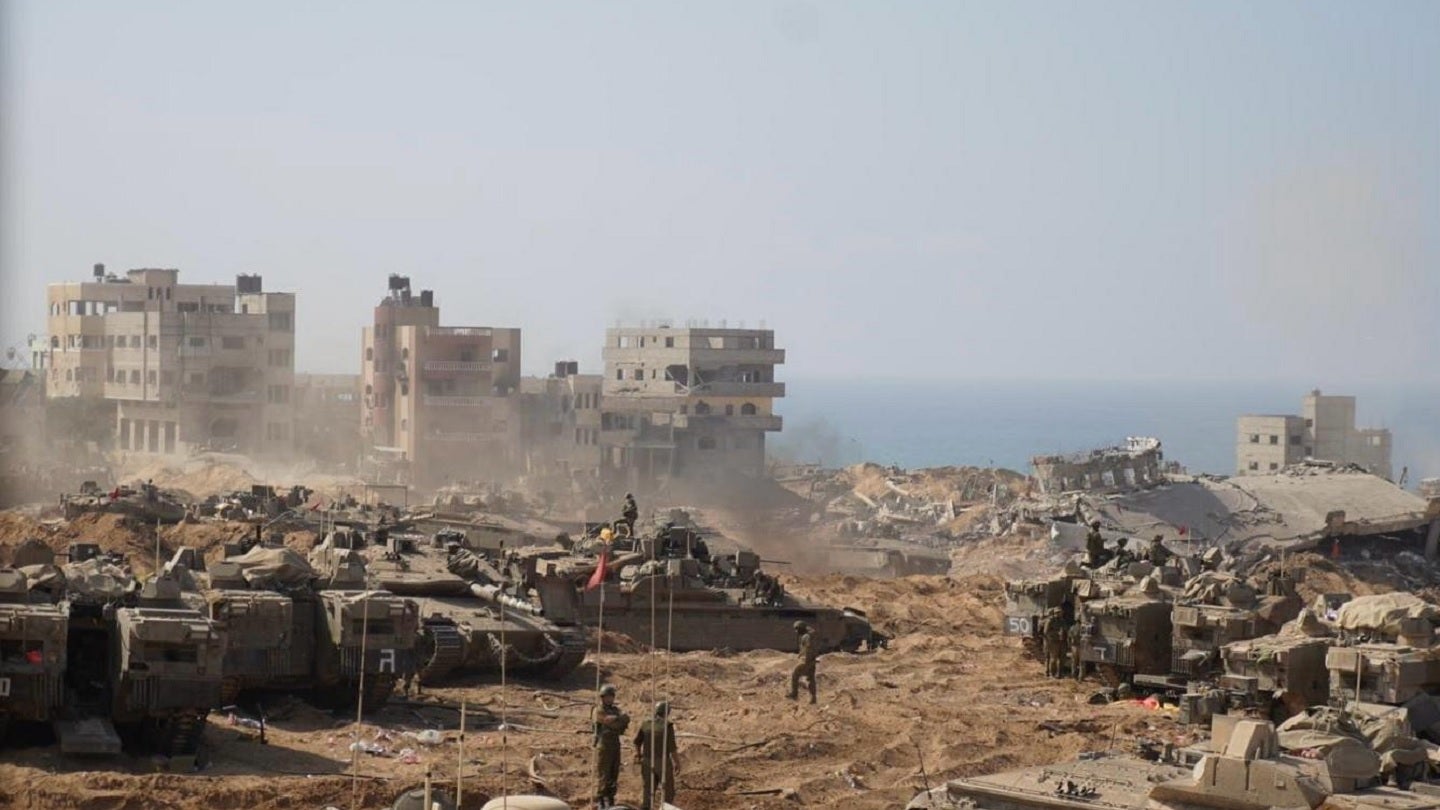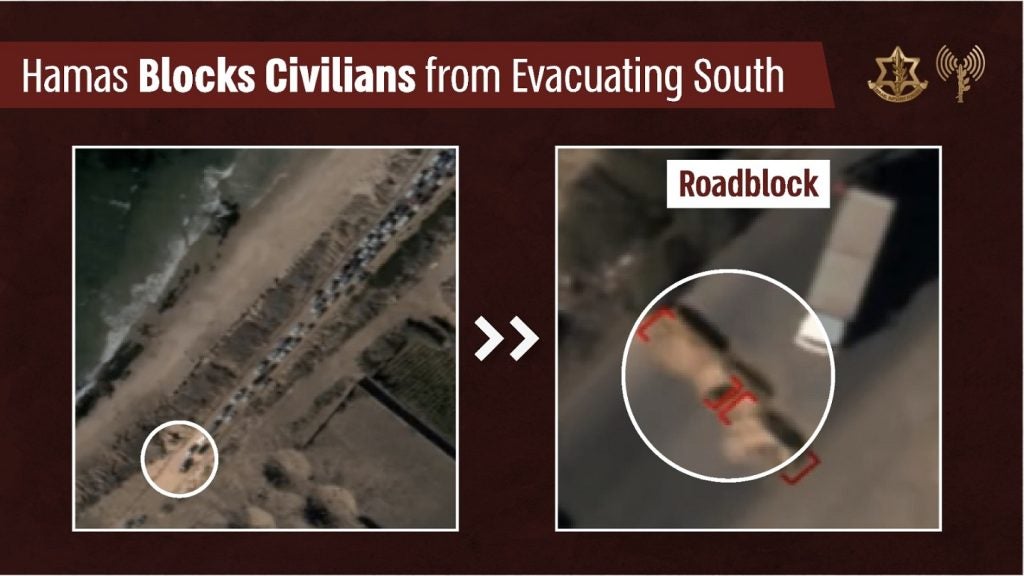
Fighting between Israel Defense Forces (IDF) ground elements and Hamas militants in northern and central areas of the Gaza Strip has caused significant destruction to infrastructure, with the Hamas-run authority in Gaza stating that nearly 10,000 have been killed in Israel’s air, sea, and land assault.
Israel’s operations are part of a concerted response to Hamas’ attack on 7 October when militants entered Israel from Gaza, killing around 1,400 Israeli’s and capturing a further 200, who are still being held hostage in the Palestinian territory.
However, while the initial focus by Israel was on its significant air power to degrade Hamas’ military infrastructure, which is often located within or next to civilian buildings, the IDF’s land capability has since moved to the fore, with units now established within the Gaza Strip. IDF releases in the first week of November point to extensive land combat operations, claiming hundreds of Hamas militants killed in combat.
Israel’s military has benefited from considerable investment with forecasts showing an upward trend likely to persist beyond the middle of the decade. According to GlobalData’s Israel Defense Market 2023-2028 report Israel’s defence budget inclusive of US aid demonstrated robust growth during the historic period, increasing from $19.3bn (NIS74.7bn) in 2019 to $23.6bn (NIS91.3bn) in 2023, reflecting a compound annual growth rate of 5.2%.
Israel’s army investments
Having withdrawn from Gaza in 2005, the Israeli Army as since embarked on an extensive modernisation effort, introducing new armoured personnel carriers (APC), infantry fighting vehicles (IFV), and upgraded main battle tanks (MBT).
Analysis of Israeli Army vehicles by GlobalDatashows a relatively young inventory, with 43.6% of the 6,714 vehicles listed, some 2,927 platforms, being under ten years of age. Just over 36% of its vehicles, or 2,438 units, have been in service between 10-20 years, with 20% (1,340 vehicles) between 20-30 years of age.
The Israeli Army’s multiple launch rocket system (MLRS) force shows an even higher proportion of new platforms, with 70.2% (165 artillery platforms) registered as being in service for less than ten years, with 29.8% (70 units) between 20-30 years old. The fleet is comprised of M270 MLRS systems, a platform widely operated in Nato militaries, and designed and manufactured by US defence prime Lockheed Martin.
However, much of Israel’s more traditional artillery capability, comprised of the M109 155mm, M-68, and M-71 systems, are significantly older, first being introduced into service in the late-1960s and early-1970s.
Israel does have a large number of MBTs, with analysis showing in excess of 2,000 vehicles in its inventory, although this does not indicate those also in service with some platforms being held in reserve or canibalised for spares. Of the 2,000+ MBTs, 1,340 are of the Merkava II/III model delivered from 1983-2003, 660 Merkava IV variants introduced into service from 2004, and an unknown number of Merkava IV Barak upgrades.
According to a Ministry of Defense (MoD) release on 19 September, the first of the “mass-produced” Barak upgrades were delivered to the 52nd Battalion of the 401st Armoured Bridge, following five years of development and production efforts.
Israel’s MoD said improvements included sensing and processing “based on artificial intelligence”, an integrated sensor and augmented reality helmet for the vehicle commander, touch screen monitors, and improved survivability, were “some of the capabilities” provided by the fifth generation Merkava/Barak MBT. Rafael’s self-defence WindGuard active protection system has also been fitted to the IDF’s Barak MBT.
Along with the Barak/Merkava 5, Israel has also been upgrading its other armoured elements. In June this year it received the first new Namer 1500 APCs, the vehicles being upgraded variants of the existing Namer APC which was first utilised by the IDF in 2008.
It is not known how many Namer 1500 vehicles will be produced for the IDF. However, in February 2023, Israel’s MoD signed an agreement with Oshkosh Defense to produce “hundreds” of the Namer 1500 variant, financed by US aid. The original Namer, of which 150 are listed in GlobalData’s IDF inventory, was derived from the combination of Nagmash, the Israeli variant of M113 APC and Merkava MBT.
In May this year, Israel also received the first of the ‘Eitan’ 8×8 APCs after several years of development, with the final fleet expected to number in the hundreds of vehicles.
Civilians trapped in worsening conditions
The plight of civilians trapped in the northern half of Gaza has gained considerable attention from the world’s media, with both Israel and Hamas claiming that each other is responsible for the inability to safely move non-combatants out of the war zone. Earlier in the conflict, Israel designated a small area in the south of the Gaza Strip as a humanitarian zone, indicating its likely focus on the looming ground offensive.
However, civilians are still trapped, amid worsening conditions and an Israel Army blockade of northern urban areas. A 5 November IDF release stated that it had “facilitated the reopening of a humanitarian corridor” in order to allow civilians in the northern Gaza Strip to move southward “for their own safety”.
Another IDF press release published on 5 November, since deleted, shows images taken from high altitude surveillance platforms of what is purportedly to be a Hamas roadblock, preventing what appears to be a large queue of traffic from moving. The image description states that the Hamas roadblock shows the prevention of civilians in Gaza moving south.

Hamas’ operational capabilities
Facing the IDF is the armed wing of the Hamas organisation, which controls Gaza, and is designated a terrorist organisation by the US and UK, among others, although other countries in the Middle East and elsewhere have not proscribed the group. The group has distinct political and armed wings, which are not necessarily aligned in terms of planning.
The equipment recovered so far by the IDF indicates a force operating as a traditional insurgency, with little in the way of vehicles, other than civilian trucks modified for security operations, commonly known as ‘tacticals’.
Information provided by the IDF of Hamas equipment seized during operations back up the idea of Hamas being orientated towards insurgency operations, with its bloody incursion into Israel on 7 October conducted using civilian vehicles and motorbikes.
However, Hamas has demonstrated an ongoing ability to launch widespread rocket attack into Israel, which has required extensive use of Israel’s Iron Dome air defence systems. The US, in partnership with Israeli industry, has recently committed to the manufacture of interceptor missiles that can be used on Israel’s Iron Dome air defence system, as well as domestic operators.
Additional reporting by Harry McNeil and Andrew Salerno-Garthwaite.




